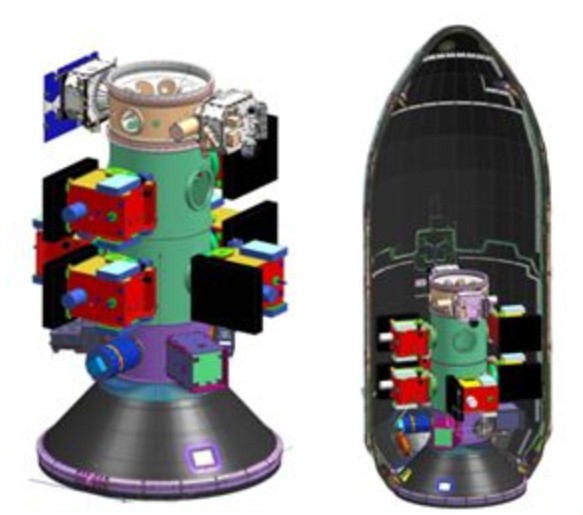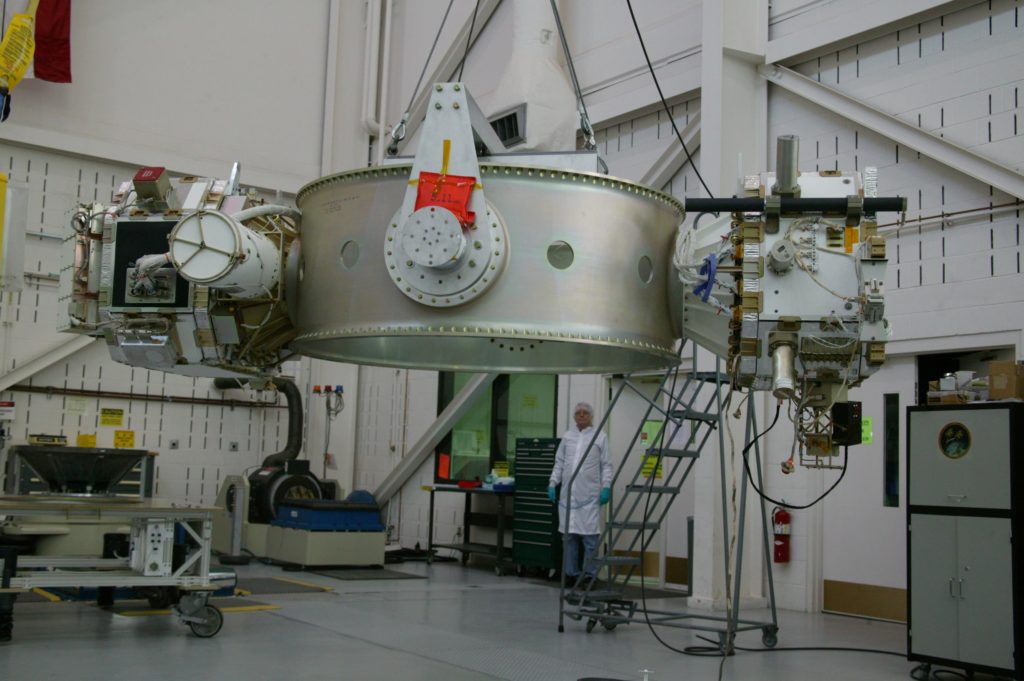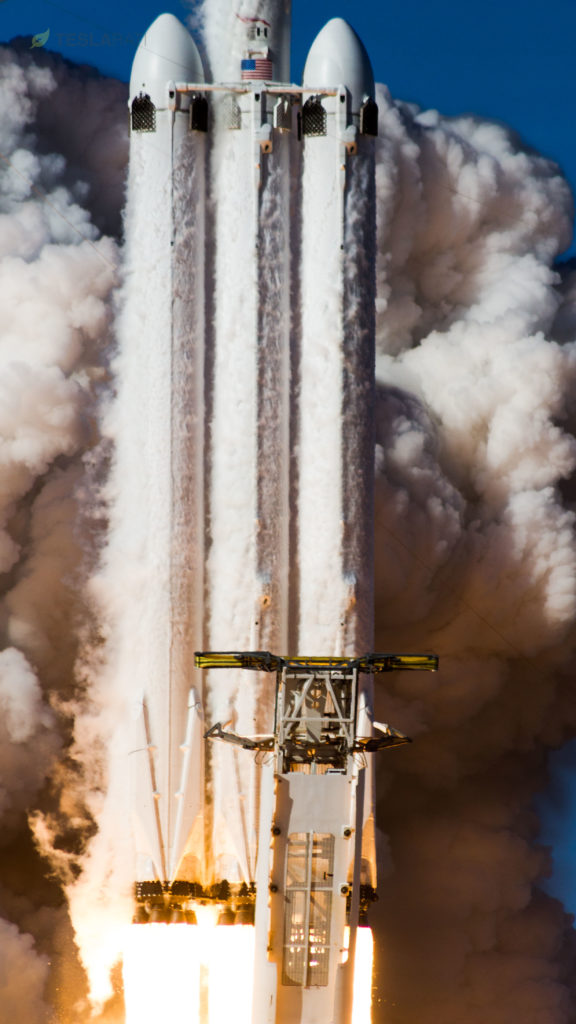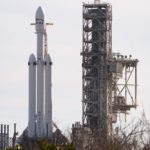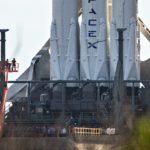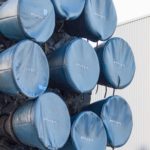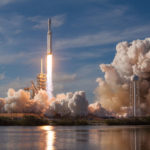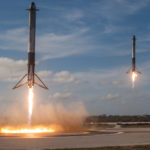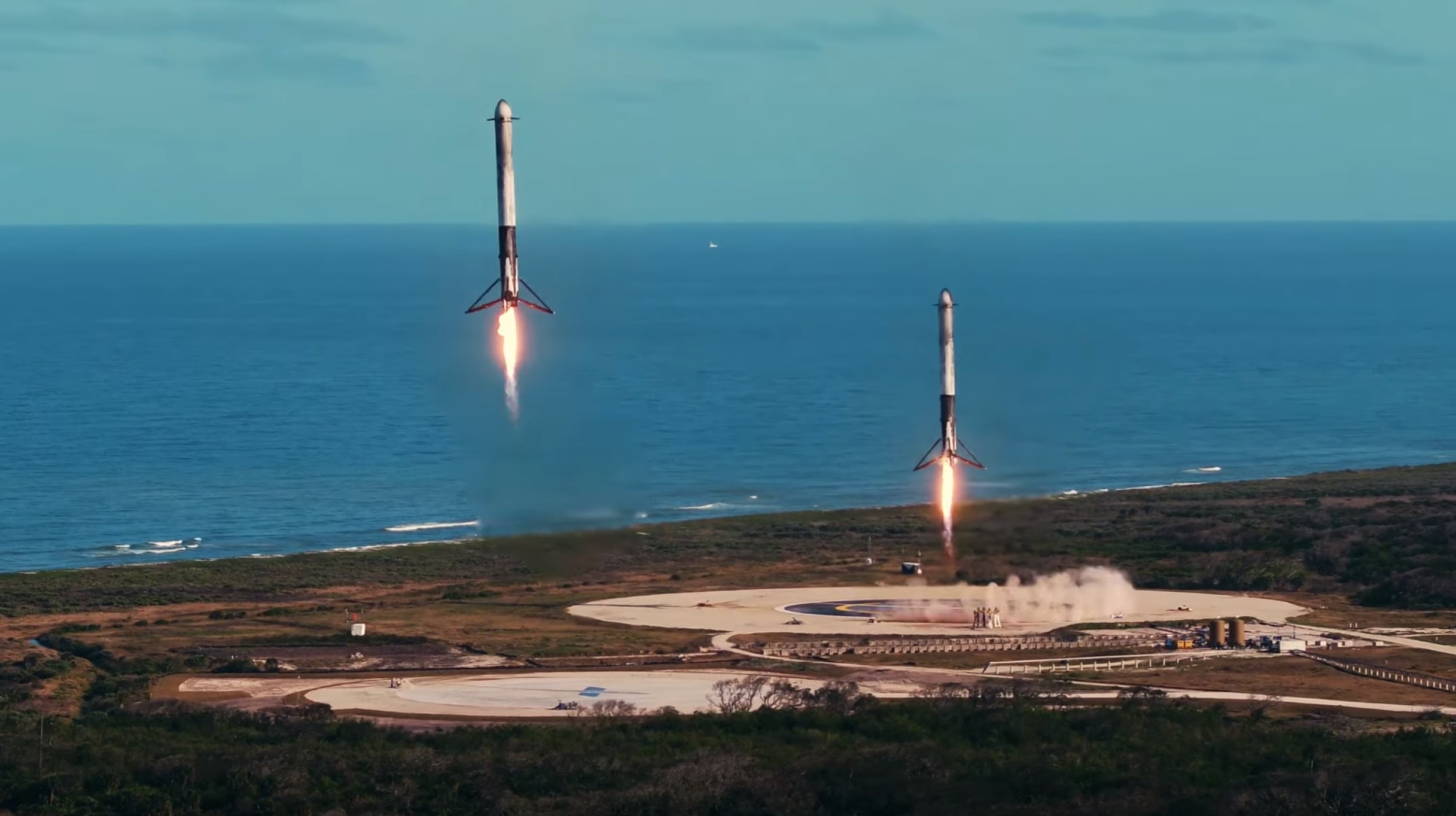
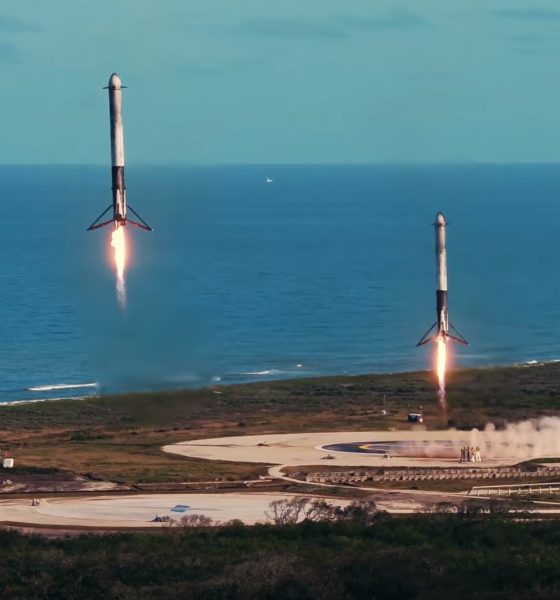
News
SpaceX Falcon Heavy with Block 5 rockets targets November launch debut
According to several of its satellite passengers, SpaceX’s second launch of Falcon Heavy – this time with three Falcon 9 Block 5 boosters – is understood to be targeted for no earlier than November 2018 and will mark the first commercial mission for the world’s most powerful operational rocket.
Under the blanket label Space Test Program-2 (STP-2), Falcon Heavy’s first operational mission will be conducted for the US Air Force and see 25 various spacecraft – some weighing as much as 500 kilograms – launched into an equally varied selection of orbits, requiring a complex series of restarts and burns for the rocket’s upgraded Block 5 second stage. STP-2 also includes a huge 5000-kilogram ballast mass as a result of the decision to fly the mission as a demonstration of Falcon Heavy instead of a less powerful but cheaper and simpler single-booster Falcon 9. The total mass of all 25 payloads is likely far beneath the powerful rocket’s actual capabilities, as are the performance and propellant reserves required for the upper stage to inject different spacecraft into a number of orbits, hence the inclusion of so much dead mass.

Falcon 9 Block 5 shows off its interstage heat shielding and titanium grid fins. Falcon Heavy’s three boosters will likely look nearly identical. (Tom Cross)
Of those 25 distinct payloads, a number even include their own co-passenger satellites and experiments and have orbit requirements ranging from a basic circular low Earth orbit (~700km) to an odd, elliptical orbit with ends at 6000 and 12000km. For Falcon Heavy’s second flight, SpaceX will be fielding three highly reusable Block 5 boosters and a Block 5 upper stage with upgrades that enable the vehicle to operate far longer on orbit and reignite its Merlin Vacuum engine three or more times.
- SpaceX’s second Falcon Heavy launch will either be the USAF’s STP-2, a collection of smaller satellites, or Arabsat 6A, a large communications satellite. (USAF)
- One group of STP-2 passengers, known as DSX, has been awaiting launch for more than eight years. (USAF)
- Falcon Heavy explodes off of Pad 39A in a spectacle of fire, Roadster in tow. (Tom Cross)
Unlikely to seriously tax Falcon Heavy’s brute-force payload lifting capabilities even with five metric tons of ballast, STP-2 will still be a lengthy and complicated endeavor for SpaceX’s Falcon upper stage – perhaps the most complex the company has yet to attempt. However, above all else, the most difficult aspect of the USAF STP-2 mission is almost certainly the comparatively mundane act of coordinating dozens of wildly different satellites and spacecraft from an equally varied number of different and geographically disparate institutions, companies, and government agencies, all of which must be ready for launch and attached to the same SpaceX payload adapter at roughly the same time to prevent mothballing launch delays.
RELATED: Reliving SpaceX Falcon Heavy: A press photographer’s memoir, not so much a blog post
- Falcon Heavy as seen a day before launch, February 5. (Tom Cross)
- All nine Merlin 1Ds displayed with their adorable cozies. (Tom Cross/Teslarati)
- Falcon Heavy’s stunning dual side booster recovery. (SpaceX)
SpaceX’s first Falcon Heavy completed its spectacularly successful debut earlier this year with a mission that saw CEO Elon Musk’s own Tesla Roadster launch into orbit around the sun and culminated in the truly extraordinary near-simultaneous landings of the rocket’s two flight-proven side boosters. Those boosters both completed their first launches in 2016, nearly two years prior to their second and final flights, and the reinforced center core was built as a new but now-outdated Block 3, lessening the blow from its failure to land aboard the drone ship Of Course I Still Love You after separating from the upper stage. Like all Block 5 versions of Falcon, the second Falcon Heavy’s Block 5 boosters should be expected to support a number of launches before retirement, ranging from several to as many as 100.

News
Tesla FSD (Supervised) v14.2.2 starts rolling out
The update focuses on smoother real-world performance, better obstacle awareness, and precise end-of-trip routing, among other improvements.
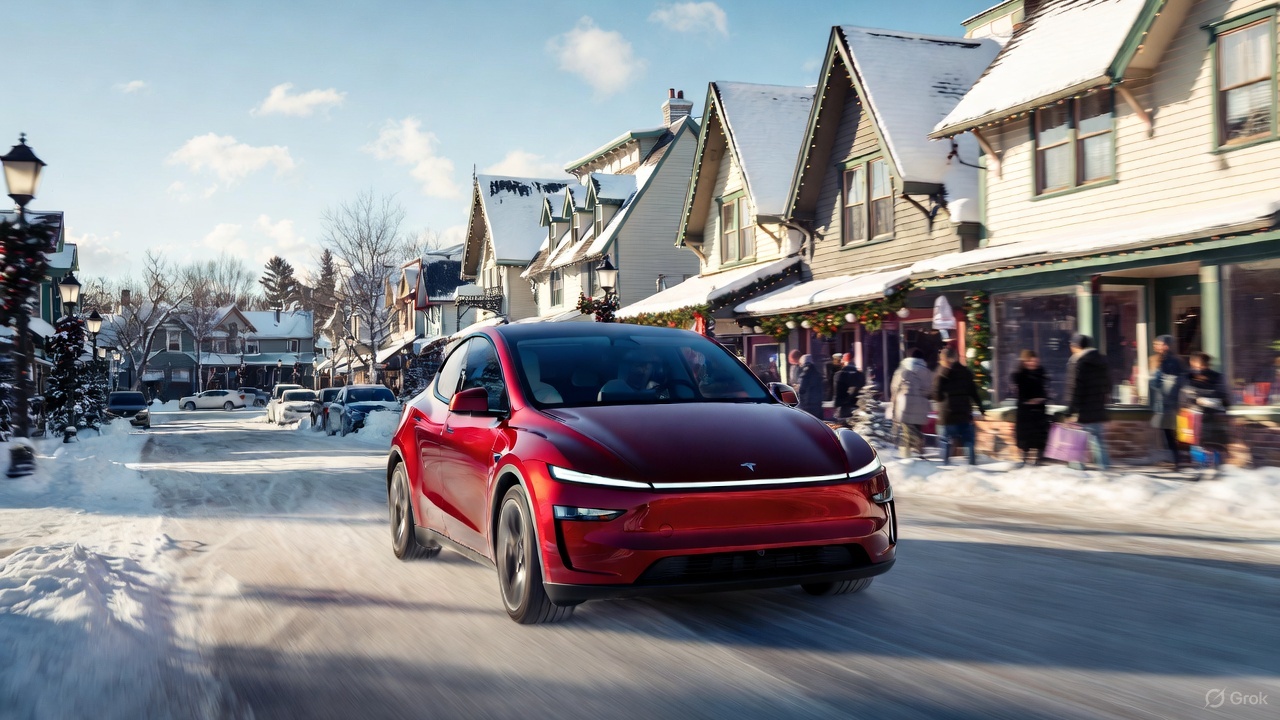
Tesla has started rolling out Full Self-Driving (Supervised) v14.2.2, bringing further refinements to its most advanced driver-assist system. The new FSD update focuses on smoother real-world performance, better obstacle awareness, and precise end-of-trip routing, among other improvements.
Key FSD v14.2.2 improvements
As noted by Not a Tesla App, FSD v14.2.2 upgrades the vision encoder neural network with higher resolution features, enhancing detection of emergency vehicles, road obstacles, and human gestures. New Arrival Options let users select preferred drop-off styles, such as Parking Lot, Street, Driveway, Parking Garage, or Curbside, with the navigation pin automatically adjusting to the user’s ideal spot for precision.
Other additions include pulling over for emergency vehicles, real-time vision-based detours for blocked roads, improved gate and debris handling, and extreme Speed Profiles for customized driving styles. Reliability gains cover fault recovery, residue alerts on the windshield, and automatic narrow-field camera washing for new 2026 Model Y units.
FSD v14.2.2 also boosts unprotected turns, lane changes, cut-ins, and school bus scenarios, among other things. Tesla also noted that users’ FSD statistics will be saved under Controls > Autopilot, which should help drivers easily view how much they are using FSD in their daily drives.
Key FSD v14.2.2 release notes
Full Self-Driving (Supervised) v14.2.2 includes:
- Upgraded the neural network vision encoder, leveraging higher resolution features to further improve scenarios like handling emergency vehicles, obstacles on the road, and human gestures.
- Added Arrival Options for you to select where FSD should park: in a Parking Lot, on the Street, in a Driveway, in a Parking Garage, or at the Curbside.
- Added handling to pull over or yield for emergency vehicles (e.g. police cars, fire trucks, ambulances).
- Added navigation and routing into the vision-based neural network for real-time handling of blocked roads and detours.
- Added additional Speed Profile to further customize driving style preference.
- Improved handling for static and dynamic gates.
- Improved offsetting for road debris (e.g. tires, tree branches, boxes).
- Improve handling of several scenarios, including unprotected turns, lane changes, vehicle cut-ins, and school buses.
- Improved FSD’s ability to manage system faults and recover smoothly from degraded operation for enhanced reliability.
- Added alerting for residue build-up on interior windshield that may impact front camera visibility. If affected, visit Service for cleaning!
- Added automatic narrow field washing to provide rapid and efficient front camera self-cleaning, and optimize aerodynamics wash at higher vehicle speed.
- Camera visibility can lead to increased attention monitoring sensitivity.
Upcoming Improvements:
- Overall smoothness and sentience.
- Parking spot selection and parking quality.
News
Tesla is not sparing any expense in ensuring the Cybercab is safe
Images shared by the longtime watcher showed 16 Cybercab prototypes parked near Giga Texas’ dedicated crash test facility.
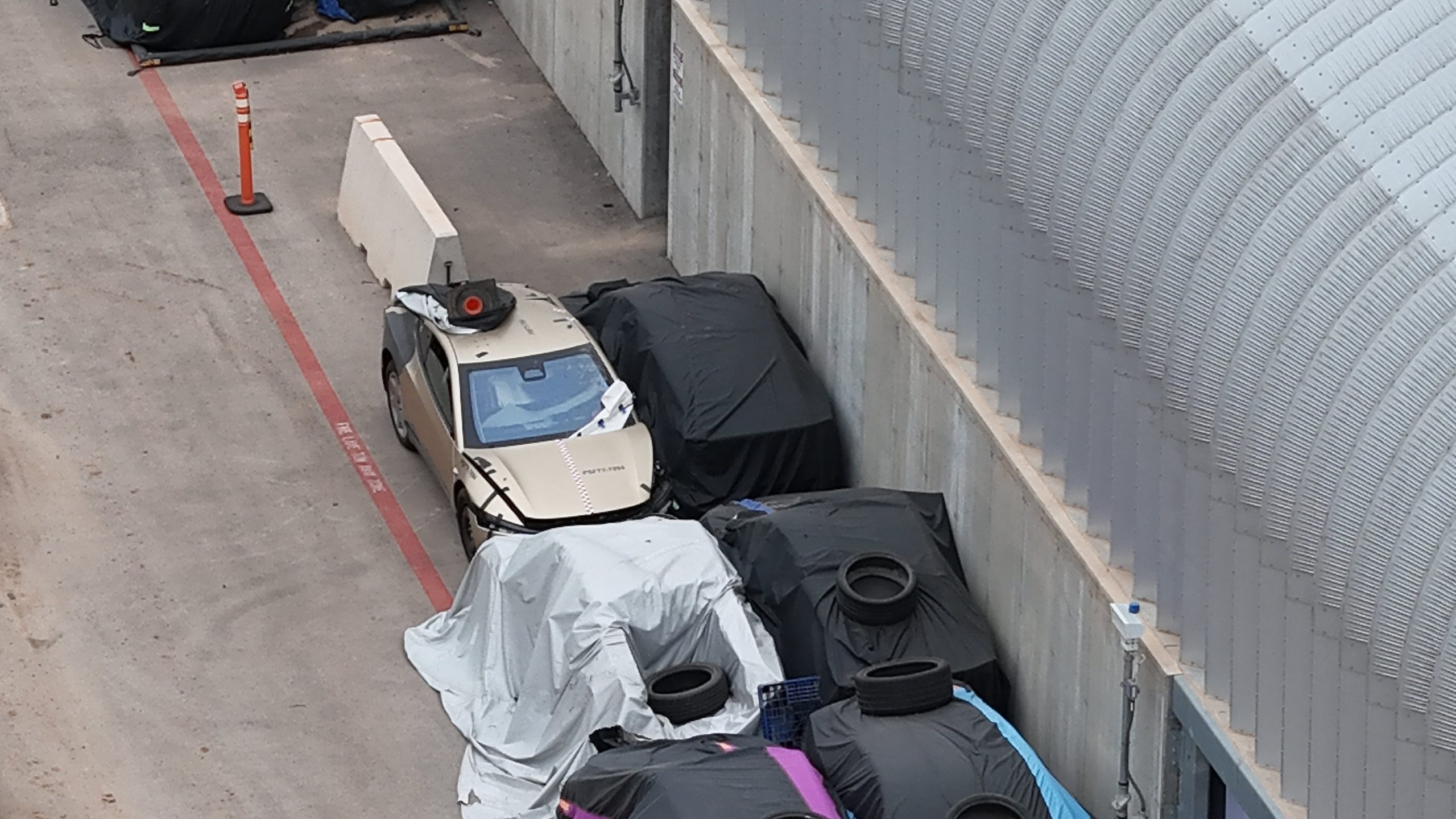
The Tesla Cybercab could very well be the safest taxi on the road when it is released and deployed for public use. This was, at least, hinted at by the intensive safety tests that Tesla seems to be putting the autonomous two-seater through at its Giga Texas crash test facility.
Intensive crash tests
As per recent images from longtime Giga Texas watcher and drone operator Joe Tegtmeyer, Tesla seems to be very busy crash testing Cybercab units. Images shared by the longtime watcher showed 16 Cybercab prototypes parked near Giga Texas’ dedicated crash test facility just before the holidays.
Tegtmeyer’s aerial photos showed the prototypes clustered outside the factory’s testing building. Some uncovered Cybercabs showed notable damage and one even had its airbags engaged. With Cybercab production expected to start in about 130 days, it appears that Tesla is very busy ensuring that its autonomous two-seater ends up becoming the safest taxi on public roads.
Prioritizing safety
With no human driver controls, the Cybercab demands exceptional active and passive safety systems to protect occupants in any scenario. Considering Tesla’s reputation, it is then understandable that the company seems to be sparing no expense in ensuring that the Cybercab is as safe as possible.
Tesla’s focus on safety was recently highlighted when the Cybertruck achieved a Top Safety Pick+ rating from the Insurance Institute for Highway Safety (IIHS). This was a notable victory for the Cybertruck as critics have long claimed that the vehicle will be one of, if not the, most unsafe truck on the road due to its appearance. The vehicle’s Top Safety Pick+ rating, if any, simply proved that Tesla never neglects to make its cars as safe as possible, and that definitely includes the Cybercab.
Elon Musk
Tesla’s Elon Musk gives timeframe for FSD’s release in UAE
Provided that Musk’s timeframe proves accurate, FSD would be able to start saturating the Middle East, starting with the UAE, next year.
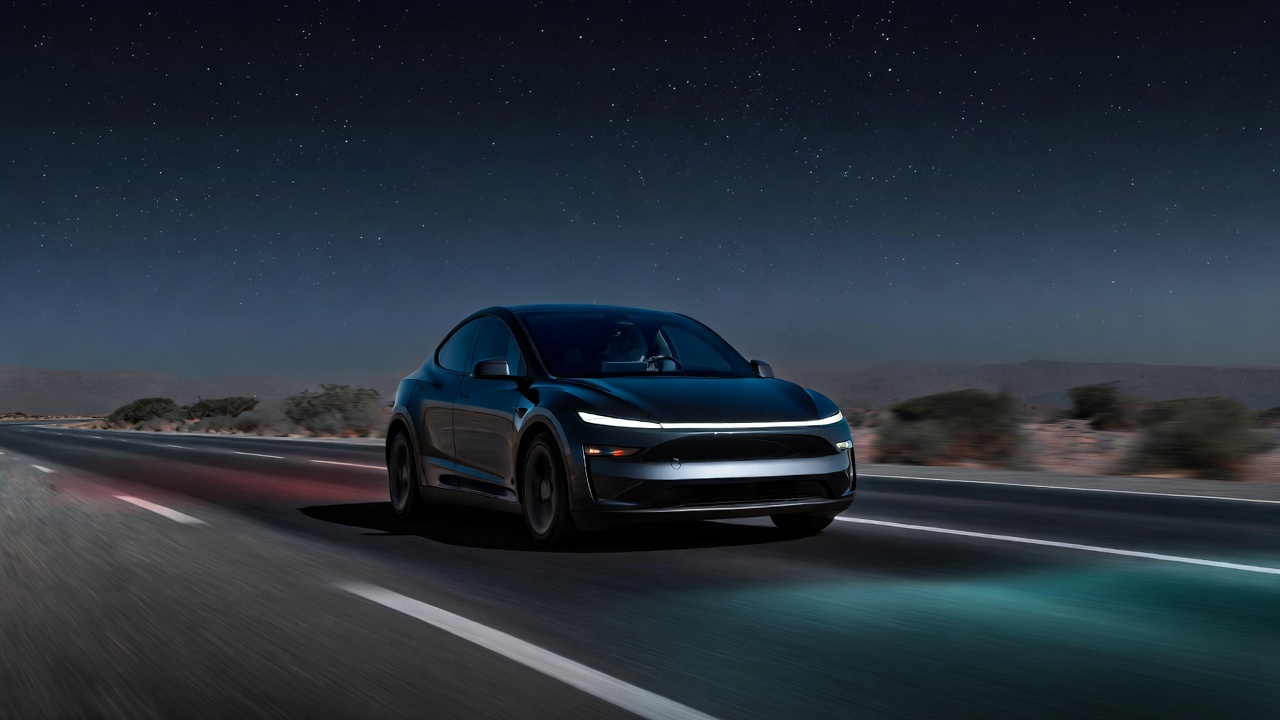
Tesla CEO Elon Musk stated on Monday that Full Self-Driving (Supervised) could launch in the United Arab Emirates (UAE) as soon as January 2026.
Provided that Musk’s timeframe proves accurate, FSD would be able to start saturating the Middle East, starting with the UAE, next year.
Musk’s estimate
In a post on X, UAE-based political analyst Ahmed Sharif Al Amiri asked Musk when FSD would arrive in the country, quoting an earlier post where the CEO encouraged users to try out FSD for themselves. Musk responded directly to the analyst’s inquiry.
“Hopefully, next month,” Musk wrote. The exchange attracted a lot of attention, with numerous X users sharing their excitement at the idea of FSD being brought to a new country. FSD (Supervised), after all, would likely allow hands-off highway driving, urban navigation, and parking under driver oversight in traffic-heavy cities such as Dubai and Abu Dhabi.
Musk’s comments about FSD’s arrival in the UAE were posted following his visit to the Middle Eastern country. Over the weekend, images were shared online of Musk meeting with UAE Defense Minister, Deputy Prime Minister, and Dubai Crown Prince HH Sheikh Hamdan bin Mohammed. Musk also posted a supportive message about the country, posting “UAE rocks!” on X.
FSD recognition
FSD has been getting quite a lot of support from foreign media outlets. FSD (Supervised) earned high marks from Germany’s largest car magazine, Auto Bild, during a test in Berlin’s challenging urban environment. The demonstration highlighted the system’s ability to handle dense traffic, construction sites, pedestrian crossings, and narrow streets with smooth, confident decision-making.
Journalist Robin Hornig was particularly struck by FSD’s superior perception and tireless attention, stating: “Tesla FSD Supervised sees more than I do. It doesn’t get distracted and never gets tired. I like to think I’m a good driver, but I can’t match this system’s all-around vision. It’s at its best when both work together: my experience and the Tesla’s constant attention.” Only one intervention was needed when the system misread a route, showcasing its maturity while relying on vision-only sensors and over-the-air learning.
